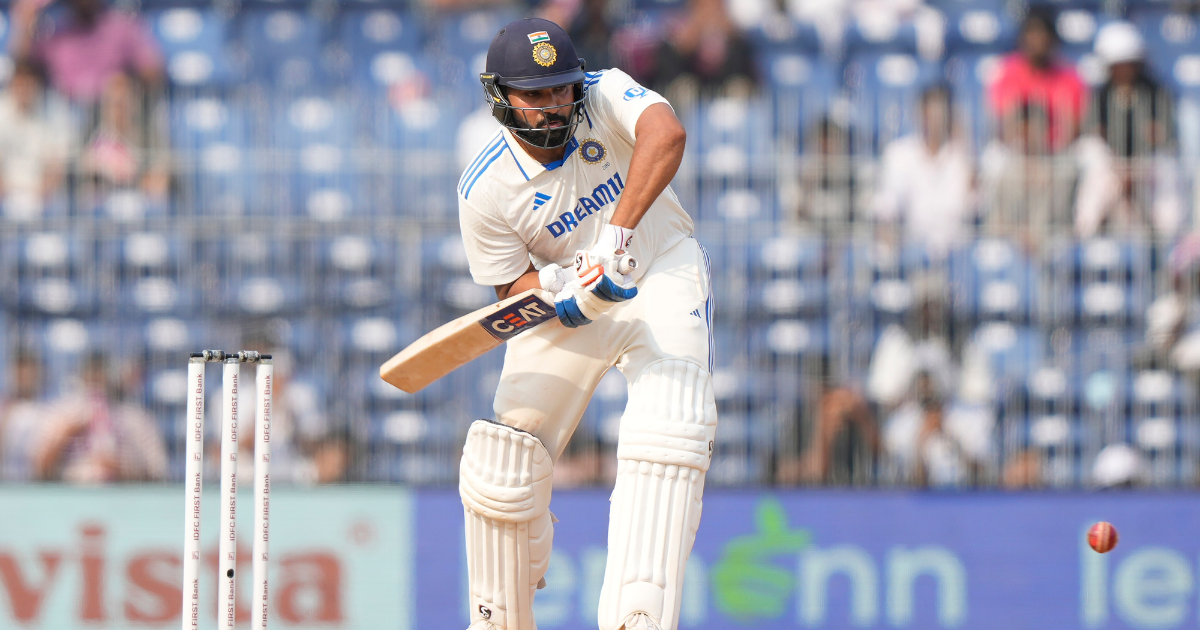Rohit Sharma, known for his elegant stroke play and substantial innings in limited-overs cricket, has recently faced significant challenges in Test cricket. Over the past series against New Zealand and Bangladesh, Sharma’s performance has dipped alarmingly, with averages that have left fans and critics alike searching for answers.
Former Indian Cricketer Reveals The Big Reason Behind The Downfall Of Rohit Sharma In Tests:

A Disappointing Series Run
In the latest Test encounters with New Zealand, Sharma managed a mere 91 runs across several innings, averaging a disappointing 15.17. This was not an isolated slump; in the preceding home series against Bangladesh, his average plummeted even further to 10.50. These figures have sparked widespread concern about his form in the five-day format.
Struggles Against Seamers
Particularly troubling has been Sharma’s struggle against seam bowling. Throughout these series, Sharma’s dismissals have often come at the hands of fast bowlers, highlighting a significant technical issue or perhaps a mental block against the moving ball. His approach, once characterized by patience and solid defense, seems to have shifted to a more aggressive, less calculating stance, particularly since the ODI World Cup.
The Expert’s Take
Aakash Chopra, a former Indian cricketer turned commentator, tackled Sharma’s recent form in his YouTube analysis. “Sometimes you pay a price for your success if you are compared with your lofty standards,” Chopra noted. He emphasized that while an average around 37-38 might not raise eyebrows for many, for someone of Sharma’s caliber, it’s seen as underperforming. “An average of 13, from whichever vantage point you might see, these numbers are worrying,” he added.
Chopra also touched on how Sharma’s approach to batting has evolved. “Rohit Sharma’s new chapter of Test cricket had started because he started loving his defense,” he explained. This shift towards a more defensive and time-consuming approach seemed to work for a while, especially during his successful outings against England where he scored 400 runs. However, this method has seen a decline in recent times, with Sharma appearing less inclined to occupy the crease for long periods.
The Impact of Recent Changes
The change in Sharma’s gameplay has been stark. Previously, he was known for building an innings, playing the long game which often led to substantial scores. However, post-World Cup, there appears to be a rush, an eagerness to dominate from the outset which has not served him well in Test cricket. “The way or the highway we talk about, Rohit didn’t use to play like this,” Chopra remarked, indicating a noticeable shift in strategy that might not be suited for the longer format.
Looking Forward
As Sharma looks to reclaim his spot at the top of the batting order, the focus will be on whether he can revert to his earlier, more patient style of play. The essence of Test cricket lies in endurance and tactical play, areas where Sharma was once a master. The upcoming series will be crucial for him to demonstrate that he can adapt and thrive, rather than merely survive, in this demanding format.
Rohit Sharma’s journey in Test cricket is at a crossroads, where his next steps will be pivotal not only for his career but also for the Indian cricket team’s strategy in the longest format of the game.





